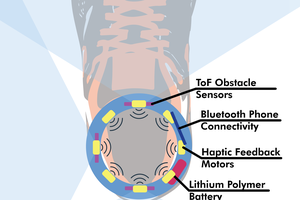Why does this project exist ?
Empathy is the capacity to understand or feel what another person is experiencing from the other person's position. It is a fundamental part of the social fabric of emotion, providing a bridge between the feelings of one person and those of another. Lack of empathy and difficulties to establish emotional connections with others are common among people suffering from mental disorders - and not only. Such issues may result in ill social interactions and isolation, which are aggravating factors in the evolution of the disorders, and eventually will affect their wellbeing.
There is no straightforward remedy when it comes to mental health and its impact on social interactions, especially with regards to enhancing one’s empathy capabilities. Then, how we can find a way to step into another person’s shoes ? And how can such an experience have a positive impact on the way we perceive and interact with the others?
Why did we come up with this solution
There are many definitions for empathy that encompass a broad range of emotional states. Types of empathy include cognitive empathy, emotional empathy, and somatic empathy.
Emotional states are usually reflected by changes in physiological manifestations. This is why scientific literature on empathy assumes a parallelism between psychological and physiological domains, and therefore measures physiological changes to assess the empathetic experience.
This is why we hope that creating the conditions for a shared physiological experience through technology will enable the participants to feel deeply connected to each other at the most visceral and unconscious level- and perhaps generate a state of empathy.
What the project currently is
For now, given the time constraints of the CRI Summer School 2017, our devices only allow one-to-one interactions. Each device senses viscerally experienced bio-signals such as heartbeat and respiration in each participants. These devices, who provide biofeedback which mimic bio-signals help participants exchange data from bio-signals, then feel each other’s vital signs as if they had stepped into each other’s body.
Our set of devices comprises 2 chest mount harnesses on which we fix heartbeat and respiration biofeedback devices:
- The heartbeat biofeedback device is made of parts of a stethoscope that detects heartbeats. The analog signal is amplified through a microphone and transmitted through bone transducers.
- The respiration biofeedback device has two parts:
*Participant A wears a device made of an arduino nano, two accelerometers (one on the chest, one on the neck). The difference of the values between the two accelerometers allow us to gather data about the rhythm and the intensity of the breath.
*Participant B wears the 2nd part of the device, which consists in two straps attached to the front of the vest and to the servo motor localised at the back of the vest. This system is able to translate data from the participant A's device into motion on Participant B's device, as the servo motor tightens and loosens the straps according to the breathing rhythm.
The two chest mount harnesses are made of neoprene, a fabric that is both flexible and rigid.
What we want it to be
- We would like the wearable devices to augment the VR experiment “Machine to Be Another” created by BeAnotherLab. This embodiment system has been designed to address the relation between identity and empathy by offering users an immersive experience that consists in seeing themselves in the body of another person. In addition to the visual experience, the wearable devices could offer a more visceral and immersive empathetic experience.
- We would like to measure each person’s changes in vital signs as the participants are synchronising their vital signs. Is there a correlation with the levels of (emotional, cognitive) empathy between them ?
- We would like to create a group experience using an infrared system, which would allow the...
Read more » Soglz
Soglz
 Jake R.
Jake R.
 Rohan Menon
Rohan Menon
 ssla-couk
ssla-couk